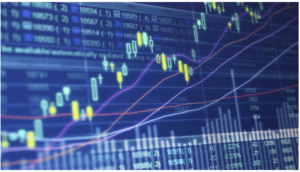A snapshot of global bourses paints a positive picture. The 1-year appreciation with Wall Street indices reflects strong gains across the board. The NASDAQ composite index is up 24.14%, the Dow Jones Industrial Average is up 18.01%, and the S&P 500 index is up 13.86%. Much the same is true across the Atlantic. The Ibex 35 is up 28.13%, the FTSE 100 index has gained 11.54%, the CAC40 is up 22.78%, and the DAX is up 28.65%. With such strong gains over the past 1 year, investors will be asking the question: Why are there so many naysayers in equities markets?
Of Bulls and Bears – Trading with Gumption
Traders move with sentiment. Whether markets are bullish or bearish, their trades reflect the direction of market movement. Traders are concerned with generating profits over short-term intervals, not holding onto financial instruments for long-term gain. Therefore, your perspective as a trader is vastly different to that of an investor. Investors typically sock money away in the financial markets in stocks, commodities, indices or currencies and wait for it to appreciate over time. Traders will roll money over quickly, trading repeatedly for significant gains. Not every trade or investment finishes in the money – that’s the nature of the game.
However, there are a few rules that casual traders can bank on according to Ernest Helms from Trade-24:
“A clear understanding of financial markets is your best bet when it comes to trading successfully. Nobody ever has perfect knowledge of the markets; we all trade with a degree of uncertainty. Your goal as an effective trader is to minimize that uncertainty, thereby maximizing the potential profitability of your trades… since nobody knows which way an asset’s price is going to move, the best way to trade the financial markets is to establish a budget ahead of time. Once you have ascertained your budget, do not deviate from it…a maximum of 2% of your available funds should be allocated to any individual trade. This is a safeguard against unintended market movements. A bankroll of $5,000 should assign no more than $100 to any individual trade. That way, you are protected against loss.â€
Opportunities with Gold
Gold is currently trading at $1,209.70 per ounce, down 1.11% or $13.60. Gold price movements have performed poorly in recent weeks, owing to a strong USD. Since gold is a dollar-denominated commodity, demand for the precious metal decreases when the USD appreciates. Dollar strength is evident in the US dollar index.
This broad measure of the USD pits it against a basket of 6 weighted currencies including the EUR, CAD, GBP, CHF, SEK and JPY. The current value of the US dollar index is 96, up 0.39% over the past 5 days. For the year to date however, the US dollar index is down 6.23%. Of course, strong June NFP (nonfarm payrolls) data of 222,000 new jobs boosted equities markets and renewed confidence in the greenback.
The number of long positions on gold as at Friday, 7 July 2017 fell shy of total short positions on the precious metal. Some 221,681 large speculators went long on gold (bullish), versus 127,882 large speculators going short on gold. However, commercial traders in the gold futures market were roundly bearish with 238,416 short positions versus 131,190 long positions.
Overall, the total short positions on gold futures numbered 423,266 versus 409,839 long positions. When options are combined with futures, the net long position on gold amounted to 597,210 versus 611,794 short positions. This is the clearest such evidence that opportunities exist to the downside with gold options and futures.


{ 0 comments… add one now }